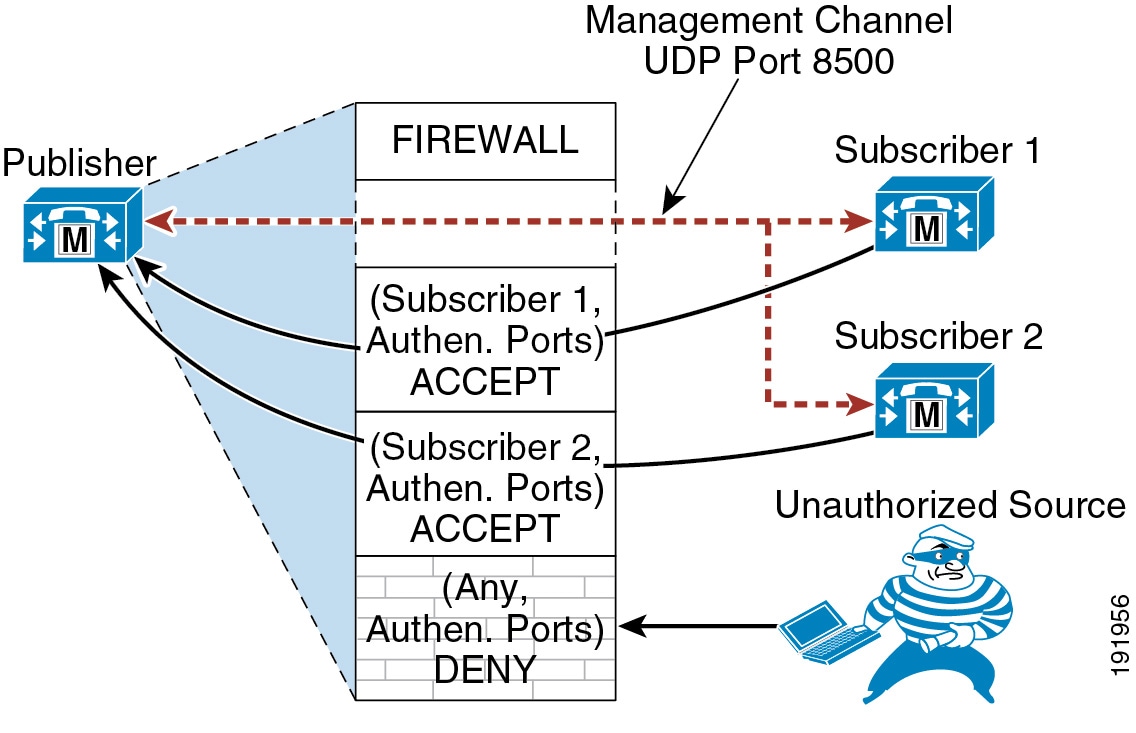What is a CUCM Cluster?
- A CUCM Cluster is a group of CUCM servers running the same version of CUCM working together as a single system to provide high availability of services for clients, transparent sharing of resources, features and enables system scalability.
- When a failure occurs on one server in a cluster, resources are redirected and the workload is redistributed to another server.
- The clustering feature of CUCM also provides a mechanism for distributing call processing and database replication among multiple CUCM servers. - The CUCM can support these two types:
Cluster :
- Supports upto 30000 IP phones
- Can be scaled to a maximum of 20 Servers in which there can be a maximum of : 1 Publisher, 8 Call Processing Subscribers, 2 TFTP servers, 9 Other Servers.
Supercluster (Mega Cluster) :
- Requires Cisco BU approval via Cisco Accounts Team
- Supports upto 60000 IP phones
- Can be scaled to a maximum of 21 Servers in which there can be a maximum of : 1 Publisher, 16 Call Processing Subscribers, 2 TFTP Servers, 2 Other servers

There are two types of data communication between CUCM servers :
1) Database Replication :
Replication is the process of copying and maintaining database objects in multiple databases that make up a distributed database system. Replication can improve the performance and protect the availability of applications because alternate data access options exist.
- Read/write copy of the database is with the Publisher.
- This database is located in the IBM-IDS server. (Informix Dynamic Server manufactured by IBM Corp.)
- This is replicated to all Subscribers in a Hub (Publisher) and Spoke (Subscriber) topology i.e in a single direction from the Publisher to all subscribers (as shown in above figure).
- The Database replication is secured using embedded Red Hat Linux, iptables dynamic firewall (within the CUCM) and database security password (given during installation)
Replication is the process of copying and maintaining database objects in multiple databases that make up a distributed database system. Replication can improve the performance and protect the availability of applications because alternate data access options exist.
- Read/write copy of the database is with the Publisher.
- This database is located in the IBM-IDS server. (Informix Dynamic Server manufactured by IBM Corp.)
- This is replicated to all Subscribers in a Hub (Publisher) and Spoke (Subscriber) topology i.e in a single direction from the Publisher to all subscribers (as shown in above figure).
- The Database replication is secured using embedded Red Hat Linux, iptables dynamic firewall (within the CUCM) and database security password (given during installation)

2) Cluster Communication :
ICCS Signaling :
- Used to replicate run-time data such as : Registration of devices, Locations bandwidth, Shared Media Resources.
- This signaling runs only between the servers that have the "ccm.exe" service i.e the Call manager service running (Call Processing agents).
- Uses TCP ports 8002-8004.
ICCS Signaling :
- Used to replicate run-time data such as : Registration of devices, Locations bandwidth, Shared Media Resources.
- This signaling runs only between the servers that have the "ccm.exe" service i.e the Call manager service running (Call Processing agents).
- Uses TCP ports 8002-8004.
CDR & CAR :
- Call Detail Records are logged by the Call Processing Engine taking the call.
- These are periodically pushed to the Publisher server.
- The Cisco CAR or any third party billing application server always points to and collects data from the Publisher.
- Call Detail Records are logged by the Call Processing Engine taking the call.
- These are periodically pushed to the Publisher server.
- The Cisco CAR or any third party billing application server always points to and collects data from the Publisher.
User Facing Features :
These features are two way replicated between Publisher and Subscriber.
These features work even if the publisher is down (from 8.x) :
These features are two way replicated between Publisher and Subscriber.
These features work even if the publisher is down (from 8.x) :
- Call Forward All (CFA)
- MWI
- Privacy Enabled/Disabled
- DND
- Extension Mobility Login
- Hunt group login
- Device Mobility
- CTI CAPF Status
- Credential Authentication
- Abhinay Mylavarapu.
No comments:
Post a Comment